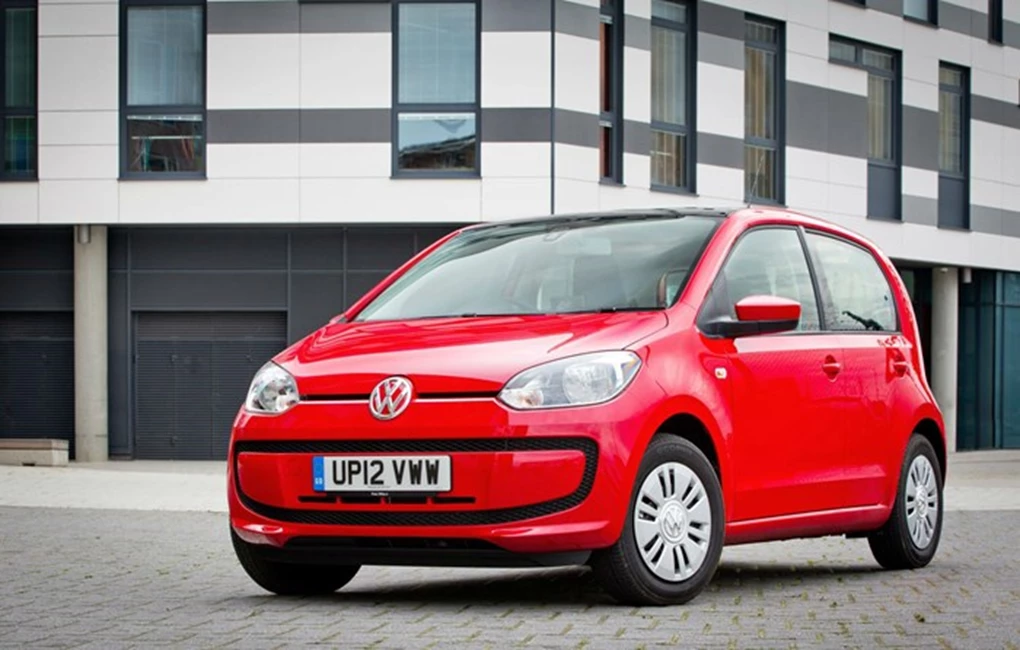City car competition is tough these days, with not only plenty of choice but also some very similar models to differentiate between. The Volkswagen up! is built on the same platform as the SEAT Mii and Skoda Citigo, but is also pitted against the Kia Picanto, Hyundai i10, Citroen C1 – the list goes on.
Aside from must-haves such as frugality, practicality and style, the up! also has to live up to hosting the VW badge while being priced under £10,000.
Even though it is just three-years-old, VW has kept the up! relevant, with the addition of a five-door model and chic special edition derivatives.
So the bottom line is, does the Volkswagen up! maintain Germanic excellence, as well as offering an affordable city run-around?
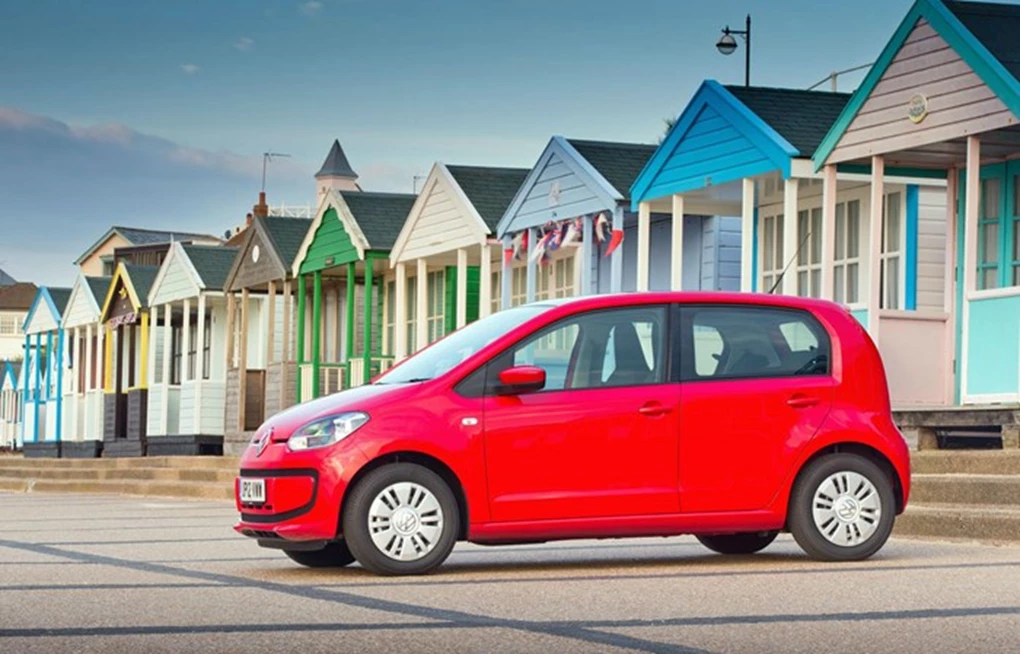
Performance
In terms of a fun and enthralling drive, a 59bhp 1.0-litre BlueMotion three-cylinder petrol engine mated to a smooth-shifting five-speed manual gearbox is never going to woo you. But it’s not designed to do that.
Although the 1.0-litre lags a little in first gear, it is surprisingly nippy when you work your way through the gears and there is more than enough power when the need for overtaking crops up. Its 0-62mph time of 14.4 seconds isn’t particularly exciting either, but it is par for the course with competitors.
If you want a little extra oomph, there is a 73bhp variant of the 1.0-litre available, shaving just over a second off its 0-62 time at 13.2 seconds.
For those of a green persuasion, there’s an electric up!. It produces 88bhp from its electric motor and has a range of 99 miles.
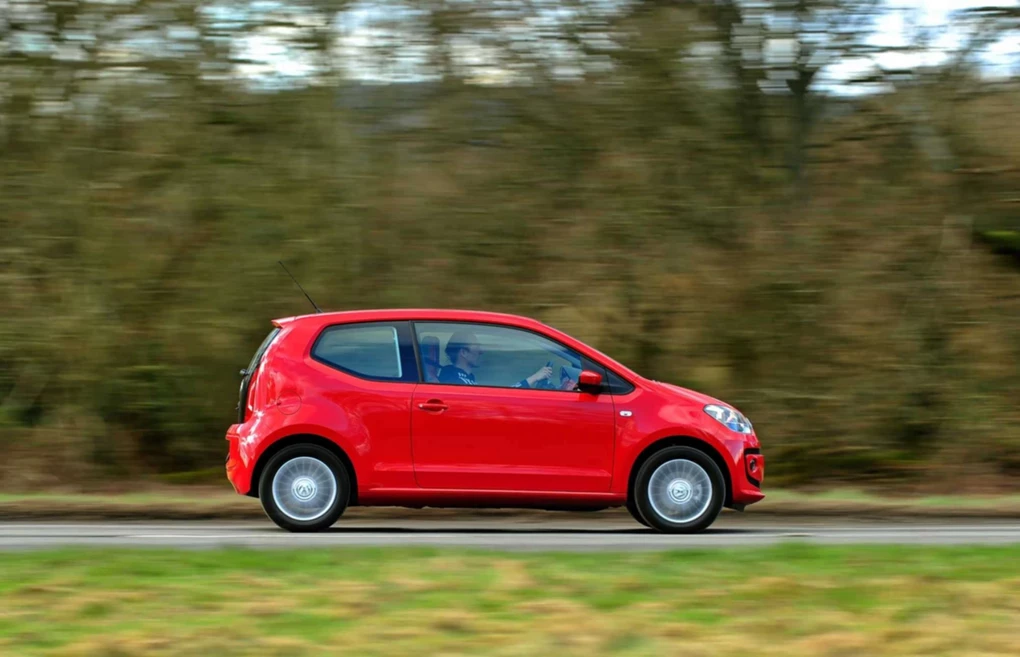
Ride and Handling
There’s usually very little to distinguish city cars when it comes to steering, but the up! manages to separate itself from the crowd with the best steering in class. It’s much more responsive than its competitors and, because of this, it is simply more entertaining to drive. There is also a slightly weightier feel to the steering, eliminating the overly light feel of most city cars.
Grip on the up! is plentiful, even in the corners, and speaking of corners, body roll is minimal, which means you can have a bit of fun with it on winding roads without feeling on edge.
Ride comfort is also impressive in the up! as it manages to absorb the majority of poor road surfaces. The only criticism is wind noise at motorway speeds, which can be a little annoying, especially on long journeys. This reproach is only in comparison to the Hyundai i10 however, as the i10 features added insulation to its doors, reducing noise from the outside world.
Our advice is to spend a little extra and choose the top trim, this grade will add sat-nav.
There’s usually very little to distinguish city cars when it comes to steering, but the up! manages to separate itself from the crowd with the best steering in class.
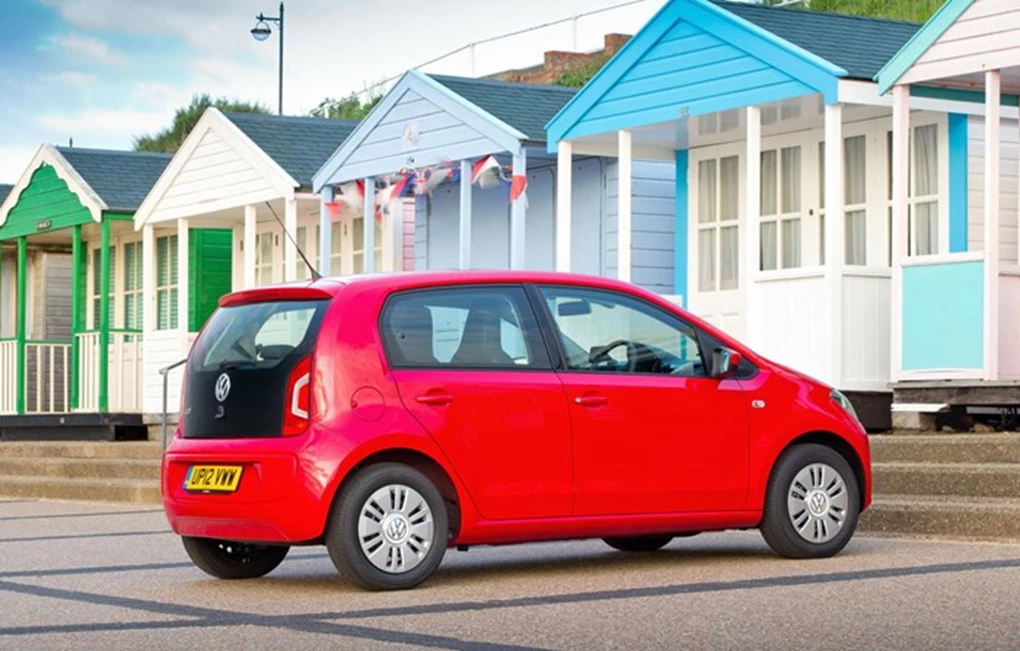
Interior and Equipment
VW has given the up! a youthful flair with some black gloss highlights along the dashboard, which, when compared to more uniform interiors like the Kia Picanto, really stands out, although the exposed metal on the inside of the doors may come off as cheap to some.
Standard kit is sparse, as expected in the city car sector, with highlights including radio and auxiliary input. The mid-range Move trim we had featured air con, electric windows, MP3 compatibility and the Maps and More infotainment system, which is a great piece of kit. Maps and More, which costs an additional £325 to entry-level Take models, has easy to use Bluetooth and sat nav features. It also has the capability to read your text messages out aloud, allowing you to keep your eyes on the road.
When it comes to practicality, the up! once again matches its opponents, with a 251-litre boot and a boxy shape which gives it a surprising amount of headroom in the rear, although leg room may prove an issue on long journeys.
The five-door version is definitely recommended as it makes life a whole lot easier when climbing in the back.
Did you know?
The electric version is called e-up! and has received a lot of smiles from residents of Yorkshire as it is a term that is used often.

Cost
The 1.0-litre BlueMotion 59bhp three-cylinder will serve you well in the up!, emitting just 95g/km of CO2, which means zero road tax. It will also return around 60mpg, helped by Bluemotion tech such as a start/stop system for idling at traffic lights.
Our test car came in at £10,235, but entry-level up! models start from £8,870, which is a smidgen more than the SEAT Mii, Peugeot 108 and Hyundai i10.
Bear in mind that the entry-level model comes without BlueMotion technology, meaning CO2 emissions stand at 105g/km and do not qualify as road-tax free.
The higher powered 1.0-litre engine with 74bhp is the worst of the range in terms of fuel economy, but against rivals it actually looks quite good. It averages 61.4mpg (62.8mpg when mated to the auto ‘box) and emits 105g/km of CO2 when mated to an automatic gearbox and 106g/km when matched to a manual ‘box.
The best engine when it comes to efficiency is the BlueMotion version of the 1.0-litre engine. It averages 68.9mpg and emits 95g/km of CO2.
Our test car came in at £10,235, but entry-level up! models start from £8,870, which is a smidgen more than the SEAT Mii, Peugeot 108 and Hyundai i10.
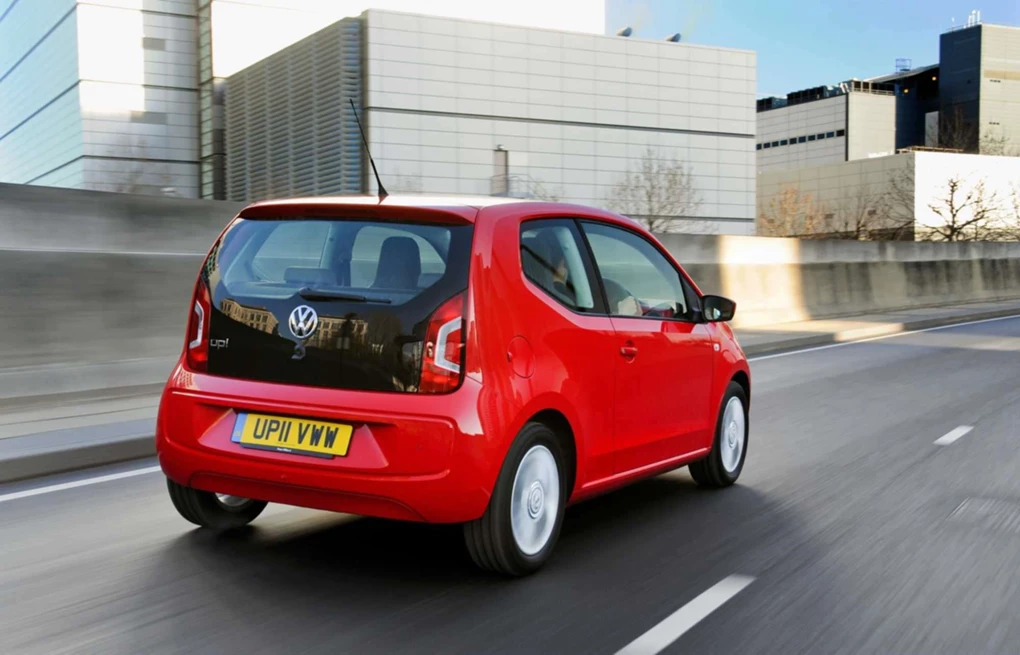
Our Verdict
It comes down to whether you’re willing to pay an extra few hundred quid for better driving dynamics and that sought-after VW badge on the bonnet – which will help when it comes to residual values. The VW is the class leader, it is better than cousins including the Mii and Citigo as it uses slightly better materials.
This is a first class city car, the king of the urban jungle – you can use it on motorways, but where this car really excels is through crowded urban landscapes.
